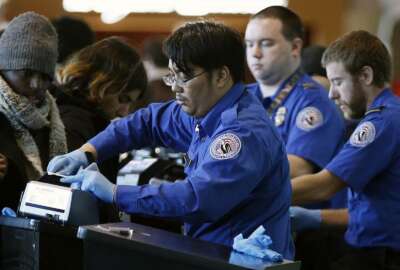OPM, NTEU offer recommendations to improve relationships between agencies, unions
A White House task force has recommendations to improve federal unions, but NTEU's national president tells Federal News Network it's time to start implementing...
Best listening experience is on Chrome, Firefox or Safari. Subscribe to Federal Drive’s daily audio interviews on Apple Podcasts or PodcastOne.
As some leaders at federal unions and agencies try to improve labor-management relations, the Biden administration is taking steps to encourage worker organizing and collective bargaining.
Earlier this year, the White House Task Force on Worker Organizing and Empowerment made 70 recommendations to enhance federal unions, including providing information on unions to federal employees and improving transparency.
Tony Reardon, the national president for the National Treasury Employees Union, told Federal News Network that the task force’s recommendations are a good start, but now, more effort is needed to actually make the changes.
“The true measure is, what specific actions are being taken?” he said. “Where frontline employees are benefiting [is] in terms of understanding that they can belong to a union, being provided with information and agencies helping to facilitate that.”
As an example, Reardon said better access to federal employees would let unions share more information about workers’ bargaining rights and their ability to join a union.
“If we are provided access to email addresses, then we can do a lot of communicating with those folks about the fact that they can belong to a union and what belonging to the union does for them. Then they can make whatever choice that they make, whether they’re going to belong to the union or not,” he said.
Reardon’s push for more labor-management interaction comes as the Bureau of Labor Statistics reported in 2021, the most recent data available, that the union membership rate is down to 10.3%, about 0.5% lower than the 2020 rate. About 7 million employees in the public sector were in unions, which is a loss of about 191,000 workers since the previous year.
Some federal offices have recently elected for union representation, including the Defense Health Agency and the Bureau of Land Management. At the same time, though, Immigration and Customs Enforcement officers at the Homeland Security Department are taking steps to separate from large, national labor organizations.
Leading by example is one way federal unions can encourage more employees to elect for coverage or join already existing chapters, Reardon said.
“We can really bring to bear the experiences and the successes, and sometimes the failures, that we’ve encountered in other agencies,” he said. “We take all of that data, and then try to work with other agencies and really bring to them the successes that we’ve seen.”
One way to improve labor-management relations is by working through disagreements early on, said Tim Curry, the Office of Personnel Management’s deputy associate director for accountability and workforce relations. The task force, for example, recommended that agencies establish management forums and encourage pre-decisional involvement for workplace issues.
Addressing the relationship between unions and agencies can also support the President Management Agenda’s goal of positioning the federal workforce a model employer. Organizing and worker empowerment are central to encouraging organizations outside the federal sector to support unions, Curry said at the Federal Mediation and Conciliation Service’s national labor-management conference on July 12.
Past administrations, including the Obama and Clinton administrations, have attempted to establish metrics for agency managers and unions to measure the impact of working together. Curry said he hopes both the labor and management sides can now learn from the past.
“We saw examples of where the [labor and management] parties worked together and it resulted in cost savings to the government – saving money, saving time and improving efficiency — so it supports the idea that working with unions and collective bargaining can be good for government operations,” Curry said. “As we’re looking at how to implement these task force recommendations, we are reviewing what happened during the Obama administration and the Clinton administration, and seeing if there are ways we can measure this.”
As for how much progress the task force has made, Curry said it’s hard to determine. The next steps for the task force will be to begin implementing the recommendations made earlier this year.
“We kind of view this [executive order] as the Biden administration’s first step in resetting labor management relations in the executive branch,” Curry said. “When I engage with agencies and unions, they’re all from different viewpoints on whether implementation has been satisfied or not.”
Both Curry and Reardon said strong, clear communication is key, especially at the manager level, to improve labor-management relations.
“Top leadership of both the agency and the union should be open and transparent about being committed to working together. This is something that should be communicated down, so they’re leading by example,” Curry said.
“Where we do disagree, it can be done in a respectful way,” Reardon said. “Frontline employees have experience and expertise that can help guide the agency. They’re the ones that understand the way that the work is done, the impact on the customer and the impact on the workforce.”
Copyright © 2024 Federal News Network. All rights reserved. This website is not intended for users located within the European Economic Area.
Drew Friedman is a workforce, pay and benefits reporter for Federal News Network.
Follow @dfriedmanWFED
Related Stories





